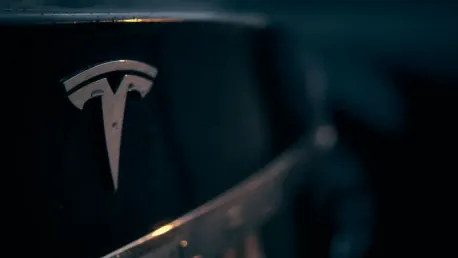Tesla is confronting a series of formidable challenges, including declining sales and intensifying competition in the electric vehicle sector. The recent resignation of David Lau, vice president of software engineering, has raised concerns regarding the company’s internal stability and strategic direction at this critical juncture. Lau, who spent over 12 years at Tesla, with more than eight years in his most recent role, played a key role in advancing the company’s software initiatives, particularly its autonomous driving technology. His departure has come at a time when Tesla’s sales figures have dipped below last year’s numbers, creating additional pressure on the company to address its competitive positioning in an increasingly crowded market.
Declining Sales and Market Competition
Impact on Tesla’s Revenue and Sales Projections
Tesla’s declining sales figures have sparked worries about the company’s future prospects, particularly as it faces stiff competition from both established automakers and new entrants in the electric vehicle market. Despite consistent efforts to innovate and expand its product lineup, Tesla’s recent financial performance has not met expectations. Factors contributing to this downturn include changing consumer preferences, supply chain disruptions, and economic uncertainties affecting market demand for high-end electric vehicles. The dip in sales projections signifies a critical need for Tesla to reassess its market strategies and adapt to evolving conditions to maintain its position as a leader in the electric vehicle industry.
The Role of Competitors in Tesla’s Market Challenges
Competitors have ramped up their technological advancements, introducing new models and features that challenge Tesla’s dominance. Companies like Ford, General Motors, and numerous startups have put forth formidable electric vehicle options, closing the technological gap that Tesla once uniquely bridged. Innovations in autonomous driving, battery efficiency, and sustainable production methods by these competitors have forced Tesla to continually innovate, but recent developments indicate that maintaining this edge is becoming increasingly difficult. Lau’s resignation has further fueled speculation that internal issues may be affecting Tesla’s ability to counter these external pressures effectively.
Internal Stability and Leadership Concerns
Contributions of David Lau to Tesla’s Software Initiatives
David Lau’s achievements during his tenure have been significant, particularly in enhancing Tesla’s software capabilities. His leadership in advancing Tesla’s autonomous driving technology has positioned the company as a pioneer in this field. Under Lau’s guidance, Tesla’s Autopilot system evolved, integrating sophisticated machine learning algorithms and real-time data processing to improve driver safety and vehicle performance. Additionally, Lau’s focus on developing the user interface and vehicle connectivity features has contributed to Tesla’s reputation for state-of-the-art software that distinguishes its vehicles from competitors. His departure raises questions about future innovations and strategic direction in Tesla’s software development efforts.
Speculations Regarding Lau’s Resignation
While the exact reasons for Lau’s resignation remain unclear, it comes at a moment of heightened scrutiny and speculation about Tesla’s internal dynamics. Some analysts suggest that the resignation might be voluntary due to personal career aspirations or could stem from internal pressures related to the company’s organizational challenges. Furthermore, reports of Tesla board members selling off their shares add to the uncertainty, hinting at potential concerns regarding the company’s short-term outlook. Lau’s exit may thus reflect deeper issues within the company, impacting not only its software development priorities but also its overall leadership framework amid these turbulent times.
Future Directions for Tesla
Addressing Market Challenges and Reinforcing Stability
For Tesla to navigate through these challenges, it must take decisive measures to bolster its market position and stabilize internal operations. Strengthening collaboration among different departments, fostering innovation in key areas such as autonomous driving and battery technology, and realigning its market strategies are critical steps for Tesla’s future trajectory. The company will need to reestablish strong leadership and define clear objectives to regain investor confidence and drive growth. Addressing these facets will be essential for Tesla to navigate the complex ecosystem of the increasingly competitive electric vehicle industry and cement its status as a market leader.
Implications of Leadership Changes on Tesla’s Strategy
The combination of rising competition and internal changes has intensified the scrutiny on Tesla’s next strategic moves and overall performance.









